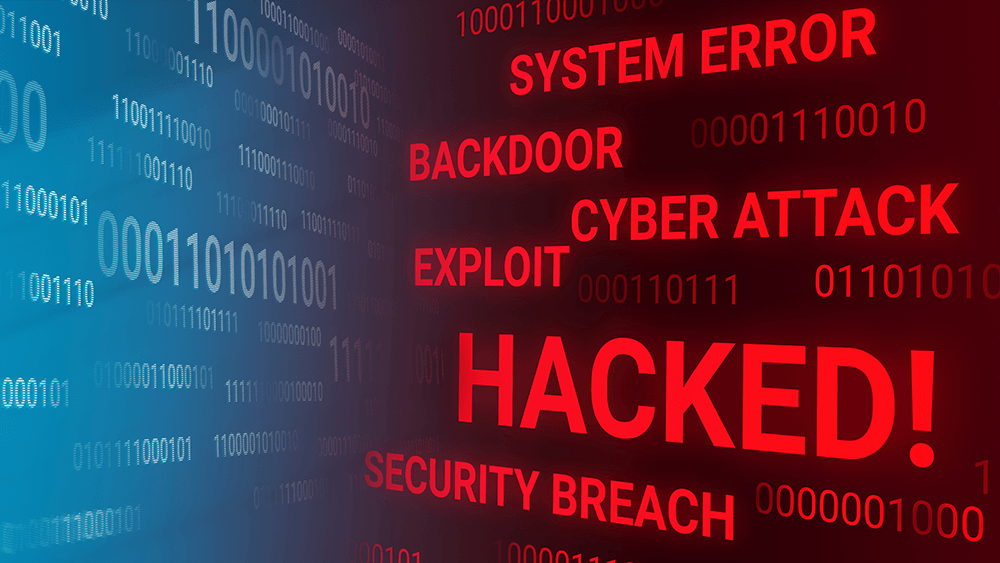Cyber threats can be confusing for those with limited IT knowledge. It’s hard enough to understand how to protect your company, without being overwhelmed by all the jargon too. However, with these threats continuously on the rise, it’s vital that you are doing what you can to protect your business infrastructure.
A cyber threat attempts to disable computers, steal data, damage data or to generally disrupt digital life – is a malicious act. With the average cost of a data breach standing at $3.86 million in 2020 and the average cost of a malware attack increasing rapidly over a five-year period, it’s no small matter.
Cyber attacks don’t just cost money either. The practical impact of data breaches are an important consideration, not to mention the time spent dealing with the aftermath. Plus, let’s not forget the potential damage to the company’s reputation, which could take far longer to rectify.
In this latest blog, we’ll walk you through the top five cyber threats you ought to be aware of (without the jargon).
1. Ransomware
Ransomware is a form of malware (malicious software) that blocks access to a computer system until you have paid a sum of money. Usually cyber criminals encrypt, or scramble (to avoid more jargon!) your data and then demanding a ransom to release it.
Ransomware is an illegal money-making system. Scarily, a 3rd party can install ransomware without your knowledge The installation occurs when clicking on deceptive links in emails, social media messages or websites. As soon as you click the link, the ransomware can infiltrate your network, locking up your files causing devastating effects.
Why do you need to be aware of ransomware? It’s unpredictable, difficult to detect and near impossible to prevent except by avoiding the risk in the first place. In the last year, 40% of businesses across the UK, U.S., Canada, and Germany have experienced ransomware attacks. Of these victims, more than a third lost revenue and 20% had to stop their business completely (Spectrum Internet).
2. Phishing
Phishing is a type of cyber attack where victims are misled into handing over sensitive information or installing malware on their own systems. This can happen using email, phone or text message and involves a person posing as someone they are not. They usually pose as a legitimate company or an individual in need of help.
The level of sophistication being used in these attempts has increased recently, over half of cyber attacks in the UK in 2018 involve phishing (PWC).
3. Data Leakage
Data leakage is also known as slow data theft and is most commonly caused by criminal hacking. It occurs when unauthorised individuals access sensitive data. It can also be caused by poor data security practises or worse yet, by accident! This tends to be the type of incident that reaches the mainstream press.
Cyber criminals often look for personal information they can use for identity theft. They can also identify confidential information such as product details or patents that are vital for a business to be competitive in its market. Credit card fraud is another common use of leaked data.
Risk Based Security (2020) reported that in the US a whopping 36 billion records were exposed through 2020. This is over four times the number of records exposed through 2019. This shows that data breaches are a real problem.
4. Hacking
Hacking is a method whereby criminals look for security weaknesses in a computer system or network. They then expose, change, destroy, disable, steal or gain information from the computer system or network.
The reasons for hacking can vary. Criminal hackers can hack to gain profit, to gather information, to protest or even just for the thrill. They often install malware onto a computer system. Sometimes so-called ‘ethical hacking’ is used (with permission) to test security systems to see how robust they are.
5. Insider Threat
This type of threat involves someone from within the targeted organisation intentionally abusing their credentials to steal information. This could be a former employee, board member or business partner. Surprisingly, it doesn’t necessarily mean they still work as an employee for a company.
Insider threats can be difficult to prevent. Many security systems may be designed to keep purely outside threats at bay. However, with some big-name companies recently targeted such as Facebook and Coca-Cola, it is an increased worry for businesses.
Now you’ve deciphered the jargon, how can you stay protected from these five types of cyber-attack?
As our society becomes ever more dependent on technology, it’s likely that cyber security threats will continue to rise. Prevent attacks and save money by making sure that you have the best security procedures in place.
Here at SupPortal, we won’t bombard you with jargon. Our goal is to work with you implement clear cyber security strategies to help protect your IT infrastructure. Take action today to take preventative measures for your business. Get in touch with SupPortal today.




